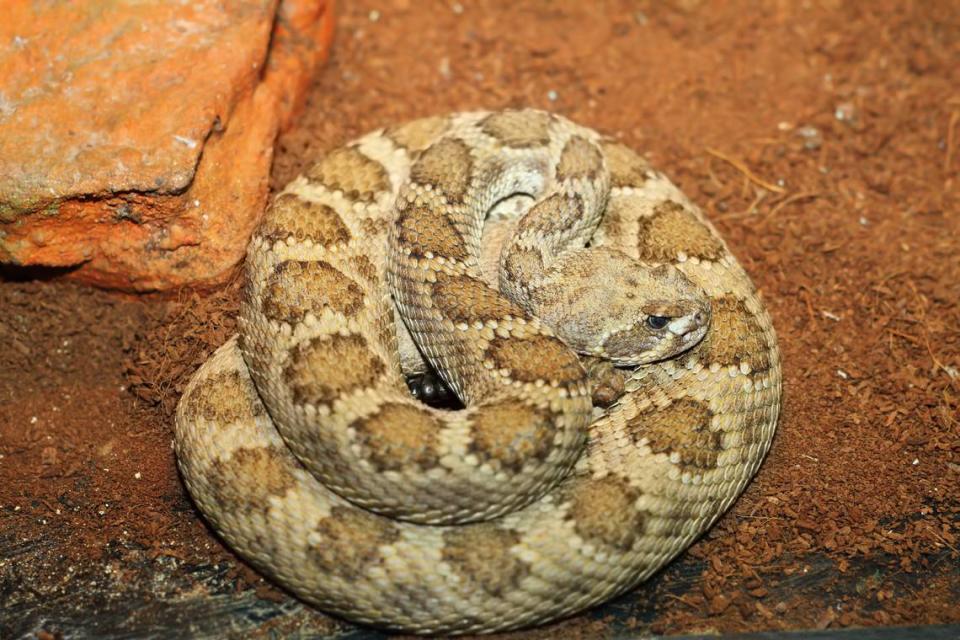One snake in eastern WA has a venomous bite. What if you’re bitten without cell service?
Eastern Washington has an abundance of hiking trails to explore during the warmer months, but being prepared when exposed to wildlife and areas with no cell service will help you have a good time.
Hiking in the Columbia Basin can be exciting, but requires preparation before venturing out into the wilderness. There are around a dozen species of snakes native to Washington state, and one common species is the western rattlesnake, which is also the only species with a venomous bite, according to the Washington Department of Fish and Wildlife.
It’s possible you could end up in an area of Washington wilderness with no cell service and a rattlesnake population. The first snake sightings of the season have already been reported around Badger Mountain. What happens if you get bitten?
Below you’ll find tips on how to avoid the snake in the first place, how to prepare for your hike — and then, what to do if the worst happens:
How to avoid a snake bite
In the U.S., roughly 1,000 people get bitten by rattlesnakes each year. To prevent a rattlesnake bite from happening when you’re out on a hike, here are some tips to consider from the U.S. Department of Agriculture and Washington Trails Association:
Prepare for your hike
Wear over-the ankle boots, thick socks, and loose-fitting long pants
Don’t go barefoot or use sandals
Consider bringing a trekking pole to move items blocking your view and alert snakes early that you’re coming
While on your trip
Stick to well-used trails when exploring
Avoid walking through tall grass and weeds
Watch where you step
Avoid wandering in the dark
When going over fallen trees or large rocks, inspect the surrounding areas to make sure there are no snakes
Be cautious when climbing rocks or gathering firewood
Shake out sleeping bags before using them and inspect logs before sitting down
Identify a western rattlesnake

Several other species are often mistaken for a Western Rattlesnake, but their bites won’t be venomous. To identify a western rattlesnake, ensure all criteria are met:
Broad triangle head (wider than the neck)
Rattle at the tip of the tail
Facial pits
Between 18 inches and four feet long
Pattern of near-square patches down the snake’s back and sides, darker than their body, which is usually a light brown or olive green depending on the environment
Prepare for your Washington hike
Hiking on a new trail can be exciting, which can make it easy to get lost or get hurt in a no cell service area. It is important to stay vigilant on designated trails.
Below are some tips from the National Park Service to prevent getting lost:
Review your route before you get on the trail
Pack a compass or handheld GPS or even a signal booster
Be aware of trail junctions
Watch out for information signs
Keep an eye out for landmarks throughout the trail
Call 911 if you have an emergency, like a rattlesnake bite. And remember, you don’t need a cell phone provider in order to use emergency services.
What to do if you don’t have cell signal
Let’s say a worst case scenario occurs, and you get hurt in an area with no service. Remember to stay calm.
Below are some tips to find help if you’re in this situation:
Calling for help
Many satellite emergency communicators can send text messages and also have an SOS feature that can send coordinates.
Some iPhone users can make an SOS call through the lock screen. The call will automatically call a local emergency number and share your location information, according to Apple. One thing to consider, iPhone 14 phone models and those after, can use the emergency SOS feature with only satellite and not cellular data or WiFi coverage.
Self rescue
Calling for help when you’re deep in the wilderness can be tricky. If you’re hurt, it may be a good idea to stay where you are and form shelter, then try to get someone’s attention.
Below are some general tips on finding help if you’re lost:
Try getting back to a cell service area to call for help. If you feel lost, use a handheld GPS, compass or map to help get you back, according to the National Park Service.
If you’re lost and have no way to get help, following a drainage or stream downhill can be used as a last resort, according to the U.S. Department of Agriculture Forest Service.
If you get bit by a snake, resist the urge to try and run to cell service. This will move the venom closer to your heart. Instead, send your hiking partner to run for help.
This is one of many reasons it is never suggested someone hike alone. Bring a partner with you, especially the further out you are. In case of emergency, it is much safer to have another person around on hikes.
When waiting for help follow these tips, according to the Washington Department of Fish and Wildlife:
Try to calm yourself or your friend if they get bitten
Restrict movement and keep the bite below heart level
Gently wash the area with soap and water
Apply a cold, wet cloth over bite
Remove any watches or rings that may constrict you and cause swelling
Immobilize the affected area

